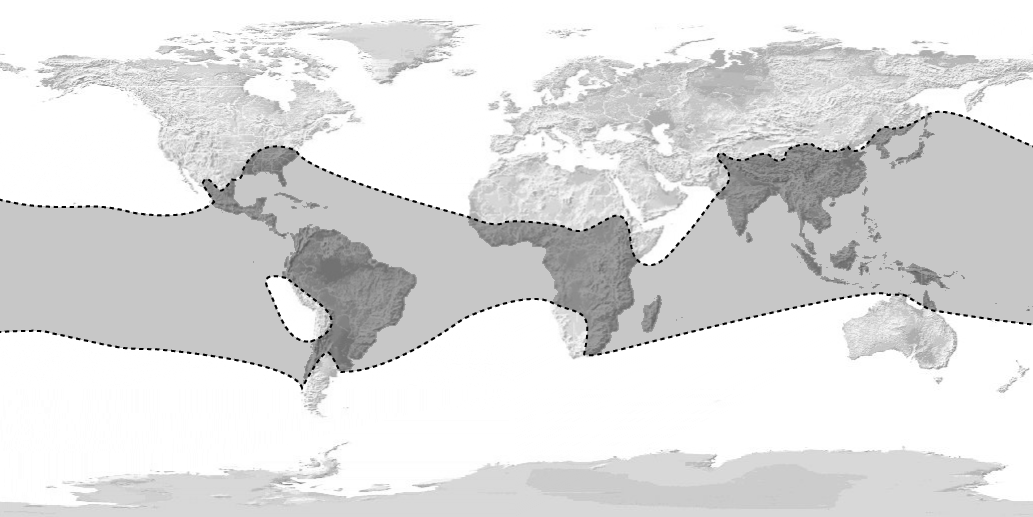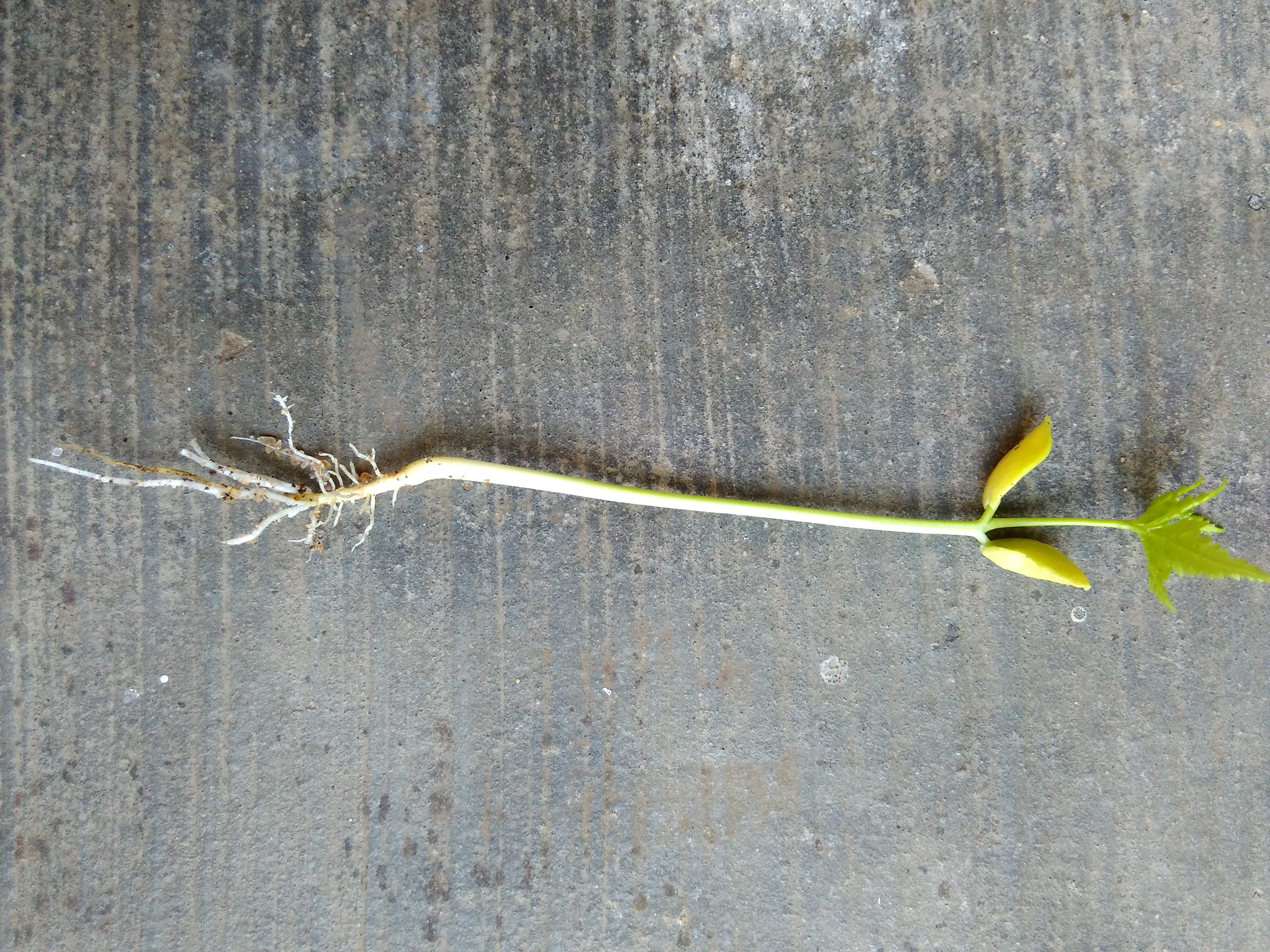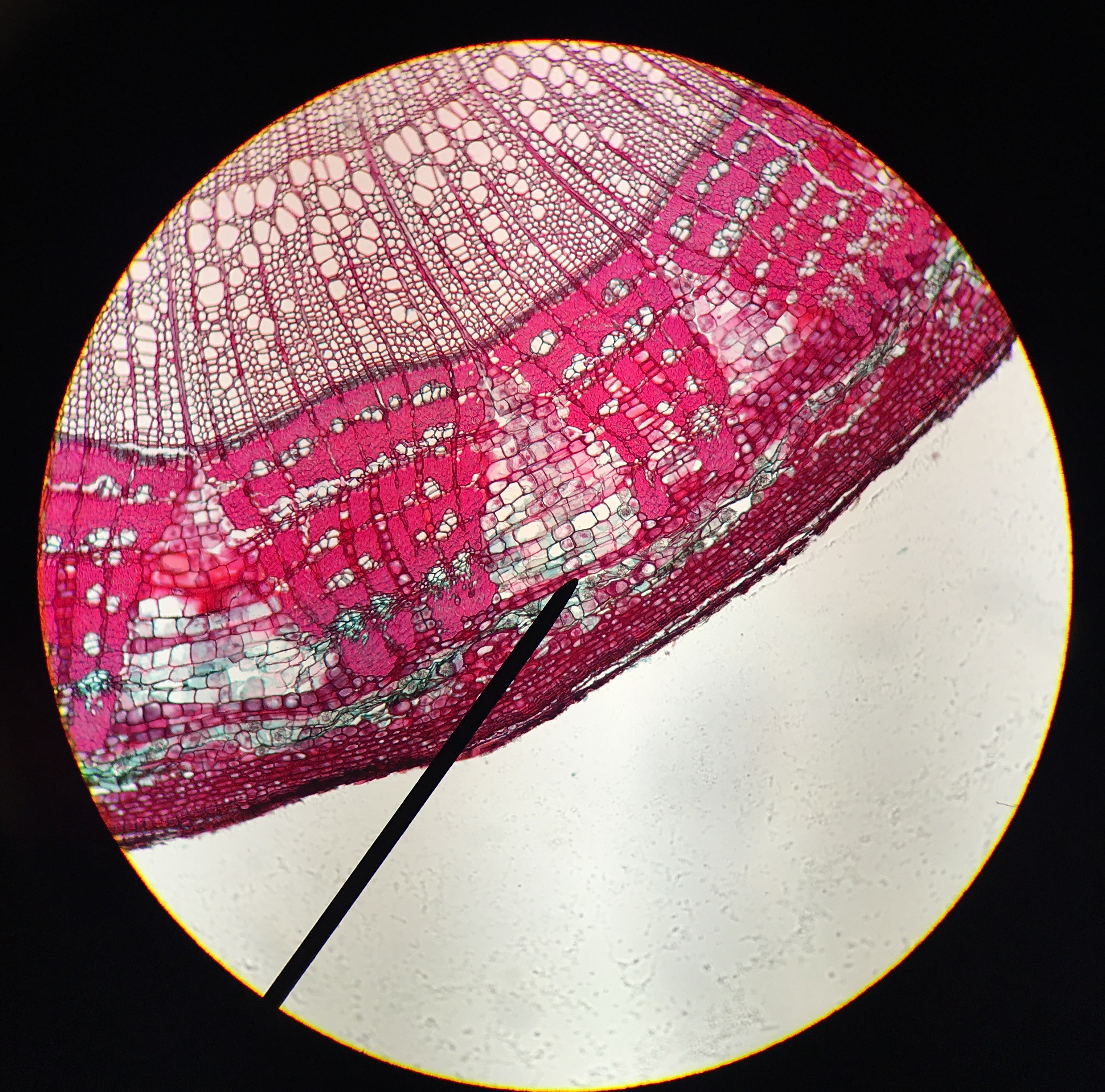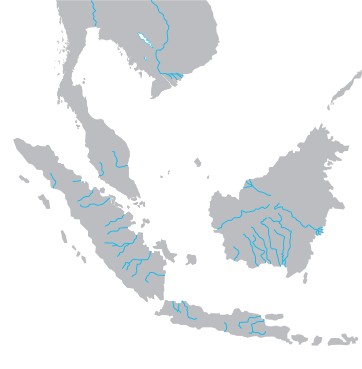|
Bamboos
Bamboos are a diverse group of mostly evergreen perennial flowering plants making up the subfamily Bambusoideae of the grass family Poaceae. Giant bamboos are the largest members of the grass family, in the case of '' Dendrocalamus sinicus'' having individual stalks ( culms) reaching a length of , up to in thickness and a weight of up to . The internodes of bamboos can also be of great length. '' Kinabaluchloa wrayi'' has internodes up to in length. and '' Arthrostylidium schomburgkii'' has internodes up to in length, exceeded in length only by papyrus. By contrast, the stalks of the tiny bamboo ''Raddiella vanessiae'' of the savannas of French Guiana measure only in length by about in width. The origin of the word "bamboo" is uncertain, but it most likely comes from the Dutch or Portuguese language, which originally borrowed it from Malay or Kannada. In bamboo, as in other grasses, the internodal regions of the stem are usually hollow and the vascular bundles in ... [...More Info...] [...Related Items...] OR: [Wikipedia] [Google] [Baidu] |
Ypresian
In the geologic timescale the Ypresian is the oldest age (geology), age or lowest stage (stratigraphy), stratigraphic stage of the Eocene. It spans the time between , is preceded by the Thanetian Age (part of the Paleocene) and is followed by the Eocene Lutetian Age. The Ypresian is consistent with the Lower Eocene (Early Eocene). Events The Ypresian Age begins during the throes of the Paleocene–Eocene Thermal Maximum (PETM). The Fur Formation in Denmark, the Messel shales in Germany, the Oise amber of France and Cambay amber of India are of this age. The Eocene Okanagan Highlands are an uplands subtropical to temperate series of lakes from the Ypresian. The Ypresian is additionally marked by another warming event called the Early Eocene Climatic Optimum (EECO). The EECO is the longest sustained warming event in the Cenozoic record, lasting about 2–3 million years between 53 and 50 Ma. The interval is characterized by low oxygen-18 isotopes, high levels of atmospheric pCO2 ... [...More Info...] [...Related Items...] OR: [Wikipedia] [Google] [Baidu] |
Arthrostylidium Schomburgkii
''Arthrostylidium schomburgkii'' is a species of '' Arthrostylidium'' bamboo in the grass family (Gramineae, or Poaceae) and subfamily Bambuseae. It is commonly called Curata. the species are native to Central America, the West Indies, northern South America, the Guianas and southern Mexico. It is most noteworthy for the extreme length of its lowest internode; which can be up to sixteen feet (five meters) in length. This long internode is used by the indigenous people to make excellent blowguns. This internode is exceeded in length only by some populations of ''Cyperus papyrus ''Cyperus papyrus'', better known by the common names papyrus, papyrus sedge, paper reed, Indian matting plant, or Nile grass, is a species of aquatic plant, aquatic flowering plant belonging to the sedge family Cyperaceae. It is a Hardiness (pla ...''. The upper internodes are much shorter; 18 to 24 inches (46 to 61 centimeters) in length. References schomburgkii {{bamboo-stub ... [...More Info...] [...Related Items...] OR: [Wikipedia] [Google] [Baidu] |
Dicotyledon
The dicotyledons, also known as dicots (or, more rarely, dicotyls), are one of the two groups into which all the flowering plants (angiosperms) were formerly divided. The name refers to one of the typical characteristics of the group: namely, that the seed has two embryonic leaves or cotyledons. There are around 200,000 species within this group. The other group of flowering plants were called monocotyledons (or monocots), typically each having one cotyledon. Historically, these two groups formed the two divisions of the flowering plants. Largely from the 1990s onwards, molecular phylogenetic research confirmed what had already been suspected: that dicotyledons are not a group made up of all the descendants of a common ancestor (i.e., they are not a monophyletic group). Rather, a number of lineages, such as the magnoliids and groups now collectively known as the basal angiosperms, diverged earlier than the monocots did; in other words, monocots evolved from within the ... [...More Info...] [...Related Items...] OR: [Wikipedia] [Google] [Baidu] |
Xylem
Xylem is one of the two types of transport tissue (biology), tissue in vascular plants, the other being phloem; both of these are part of the vascular bundle. The basic function of the xylem is to transport water upward from the roots to parts of the plants such as stems and leaves, but it also transports plant nutrition, nutrients. The word ''xylem'' is derived from the Ancient Greek word (), meaning "wood"; the best-known wood organism is plants, though it is found throughout a plant. The term was introduced by Carl Nägeli in 1858. Structure The most distinctive xylem cell (biology), cells are the long tracheary elements that transport water. Tracheids and vessel elements are distinguished by their shape; vessel elements are shorter, and are connected together into long tubes that are called ''vessels''. Wood also contains two other type of cells: Ground tissue#Parenchyma, parenchyma and ground tissue#Fibres, fibers. Xylem can be found: * in vascular bundles, present in ... [...More Info...] [...Related Items...] OR: [Wikipedia] [Google] [Baidu] |
Phloem
Phloem (, ) is the living tissue in vascular plants that transports the soluble organic compounds made during photosynthesis and known as ''photosynthates'', in particular the sugar sucrose, to the rest of the plant. This transport process is called translocation. In trees, the phloem is the innermost layer of the bark, hence the name, derived from the Ancient Greek word (''phloiós''), meaning "bark". The term was introduced by Carl Nägeli in 1858. Different types of phloem can be distinguished. The early phloem formed in the growth apices is called protophloem. Protophloem eventually becomes obliterated once it connects to the durable phloem in mature organs, the metaphloem. Further, secondary phloem is formed during the thickening of stem structures. Structure Phloem tissue consists of conducting cells, generally called sieve elements, parenchyma cells, including both specialized companion cells or albuminous cells and unspecialized cells and supportive cells, such ... [...More Info...] [...Related Items...] OR: [Wikipedia] [Google] [Baidu] |
Cambium
A cambium (: cambiums or cambia), in plants, is a tissue layer that provides partially undifferentiated cells for plant growth. It is found in the area between xylem and phloem. A cambium can also be defined as a cellular plant tissue from which phloem, xylem, or cork grows by division, resulting (in woody plants) in secondary thickening. It forms parallel rows of cells, which result in secondary tissues. There are several distinct kinds of cambium found in plant stems and roots: * Cork cambium, a tissue found in many vascular plants as part of the periderm. * Unifacial cambium, which ultimately produces cells to the interior of its cylinder. * Vascular cambium, a lateral meristem in the vascular tissue of plants. Uses The cambium of many species of woody plants are edible; however, due to its vital role in the homeostasis and growth of woody plants, this may result in death of the plant if enough cambium is removed at once. The cambium can generally be eaten raw or co ... [...More Info...] [...Related Items...] OR: [Wikipedia] [Google] [Baidu] |
Vascular Bundle
A vascular bundle is a part of the transport system in vascular plants. The transport itself happens in the stem, which exists in two forms: xylem and phloem. Both these tissues are present in a vascular bundle, which in addition will include supporting and protective tissues. There is also a tissue between xylem and phloem, which is the cambium. The xylem typically lies towards the axis ( adaxial) with phloem positioned away from the axis ( abaxial). In a stem or root this means that the xylem is closer to the centre of the stem or root while the phloem is closer to the exterior. In a leaf, the adaxial surface of the leaf will usually be the upper side, with the abaxial surface the lower side. The sugars synthesized by the plant with sun light are transported by the phloem, which is closer to the lower surface. Aphids and leaf hoppers feed off of these sugars by tapping into the phloem. This is why aphids and leaf hoppers are typically found on the underside of a l ... [...More Info...] [...Related Items...] OR: [Wikipedia] [Google] [Baidu] |
Internode (botany)
A stem is one of two main structural axes of a vascular plant, the other being the root. It supports leaf, leaves, flowers and fruits, transports water and dissolved substances between the roots and the shoots in the xylem and phloem, engages in photosynthesis, stores nutrients, and produces new living tissue. The stem can also be called the culm, halm, haulm, stalk, or thyrsus. The stem is normally divided into nodes and internodes: * The nodes are the points of attachment for leaves and can hold one or more leaves. There are sometimes axillary buds between the stem and leaf which can grow into branches (with leaf, leaves, conifer cones, or inflorescence, flowers). Adventitious roots (e.g. brace roots) may also be produced from the nodes. Vines may produce tendrils from nodes. * The internodes distance one node from another. The term "Shoot (botany), shoots" is often confused with "stems"; "shoots" generally refers to new fresh plant growth, including both stems and other str ... [...More Info...] [...Related Items...] OR: [Wikipedia] [Google] [Baidu] |
Kannada Language
Kannada () is a Dravidian languages, Dravidian language spoken predominantly in the state of Karnataka in southwestern India, and spoken by a minority of the population in all neighbouring states. It has 44 million native speakers, and is additionally a second or third language for 15 million speakers in Karnataka. It is the official and administrative language of Karnataka. It also has Languages with legal status in India, scheduled status in India and has been included among the country's Classical languages of India, designated classical languages.Kuiper (2011), p. 74R Zydenbos in Cushman S, Cavanagh C, Ramazani J, Rouzer P, ''The Princeton Encyclopedia of Poetry and Poetics: Fourth Edition'', p. 767, Princeton University Press, 2012, Kannada was the court language of a number of dynasties and empires of South India, Central India and the Deccan Plateau, namely the Kadamba dynasty, Western Ganga dynasty, Nolamba dynasty, Chalukya dynasty, Rashtrakutas, Western ... [...More Info...] [...Related Items...] OR: [Wikipedia] [Google] [Baidu] |
Malay Language
Malay ( , ; , Jawi alphabet, Jawi: ) is an Austronesian languages, Austronesian language spoken primarily by Malays (ethnic group), Malays in several islands of Maritime Southeast Asia and the Malay Peninsula on the mainland Asia. The language is an official language of Brunei, Malaysia, and Singapore. Indonesian language, Indonesian, a standardized variety of Malay, is the official language of Indonesia and one of the working languages of East Timor. Malay is also spoken as a regional language of Malays (ethnic group), ethnic Malays in Indonesia and the Thai Malays, southern part of Thailand. Altogether, it is spoken by 60 million people across Maritime Southeast Asia. The language is pluricentric and a ISO 639 macrolanguage, macrolanguage, i.e., a group of Mutual intelligibility, mutually intelligible speech varieties, or dialect continuum, that have no traditional name in common, and which may be considered distinct languages by their speakers. Several varieties of it ar ... [...More Info...] [...Related Items...] OR: [Wikipedia] [Google] [Baidu] |
Portuguese Language
Portuguese ( or ) is a Western Romance language of the Indo-European language family originating from the Iberian Peninsula of Europe. It is the official language of Angola, Brazil, Cape Verde, Guinea-Bissau, Mozambique, Portugal and São Tomé and Príncipe, and has co-official language status in East Timor, Equatorial Guinea and Macau. Portuguese-speaking people or nations are known as Lusophone (). As the result of expansion during colonial times, a cultural presence of Portuguese speakers is also found around the world. Portuguese is part of the Iberian Romance languages, Ibero-Romance group that evolved from several dialects of Vulgar Latin in the medieval Kingdom of Galicia and the County of Portugal, and has kept some Gallaecian language, Celtic phonology. With approximately 250 million native speakers and 17 million second language speakers, Portuguese has approximately 267 million total speakers. It is usually listed as the List of languages by number of native speaker ... [...More Info...] [...Related Items...] OR: [Wikipedia] [Google] [Baidu] |
Dutch Language
Dutch ( ) is a West Germanic languages, West Germanic language of the Indo-European language family, spoken by about 25 million people as a first language and 5 million as a second language and is the List of languages by total number of speakers, third most spoken Germanic language. In Europe, Dutch is the native language of most of the population of the Netherlands and Flanders (which includes 60% of the population of Belgium). "1% of the EU population claims to speak Dutch well enough in order to have a conversation." (page 153). Dutch was one of the official languages of South Africa until 1925, when it was replaced by Afrikaans, a separate but partially Mutual intelligibility, mutually intelligible daughter language of Dutch. Afrikaans, depending on the definition used, may be considered a sister language, spoken, to some degree, by at least 16 million people, mainly in South Africa and Namibia, and evolving from Cape Dutch dialects. In South America, Dutch is the native l ... [...More Info...] [...Related Items...] OR: [Wikipedia] [Google] [Baidu] |



